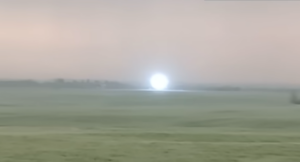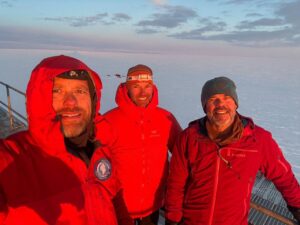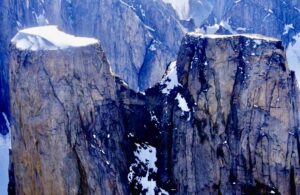For someone whose name is plastered all across North America, not much is known about Henry Hudson. Iconic yet elusive, his life and voyages are an unfinished puzzle. The English explorer vanished in 1610, after struggling for many years to find the Northwest Passage to Asia.
So far, his disappearance has featured minor clues, some rumors, and many theories only. Although we live in an age where information is right at our fingertips, neither historians nor Wikipedia editors have a satisfactory lowdown on Henry Hudson.
Before 1607, Henry Hudson’s life was a big question mark. Even afterward, historians have only speculated about what kind of man he was. So far, they have profiled him as an experienced, literate navigator, probably born in the 1570s. They claim to have found his father or grandfather, also named Henry Hudson, in Queen Mary’s Charter of 1555.
This earlier Hudson may have been a founding member of the Muscovy Company, which eventually funded Hudson’s journeys to the Arctic. If Hudson grew up wealthy, it is highly likely that he received a decent education, since he could read, write, and do mathematics. He possibly served as a cabin boy on voyages, explaining his later competence as an explorer.

Sea ice in Hudson Bay. Photo: Danita Delimont/Shutterstock
Failure and persistence
We do know that in 1607, the Muscovy Company commissioned Hudson to lead an expedition to find a trade route from the Arctic to Asia. Alas, this first voyage was unsuccessful and undoubtedly set the stage for those in the years to come. The ship Hopewell sailed from England in April 1607 with a crew of 10 men, including Henry Hudson’s son John.
The expedition reached the Arctic Circle more than a month later. They managed to sail past Spitsbergen and Greenland. While Hudson recorded the abundance of whales in these waters, an industry the Muscovy Company was interested in developing, a route to the East evaded them.
Despite the summer season, heavy ice and high winds prevented them from venturing further. By the time they turned the ship around, tensions were high with the men. Hudson demoted two sailors and played favorites with others. This sowed seeds of anger and resentment that would play a major role in his later demise.
Various accounts and letters suggest that Hudson was headstrong and persistent. His insistence on finding a passage across the top of the world took him on another expedition to the Arctic Circle in 1608. This time, tried to access the Far East via Novaya Zemlya in northern Russia.
Hudson, his son John and a crew of 14 men left England on the Hopewell once again. Massive ice-packed areas again checked their progress. Hudson decided not to continue along the north coast of Russia and turned his ship back, toward the New World.
A near-mutiny
Eventually, the crew realized his intentions and almost mutinied, which prompted him to return to England. There, the Muscovy Company was disappointed in his failures and denied him any further funding. This made him desperate enough to turn to the rival Dutch East India Company. His obsession with exploring on his own terms would be his downfall.

Henry Hudson meets natives in New York. Photo: Everett Collection/Shutterstock
In 1609, Hudson impressed the Dutch enough to win himself a generous payment of 800 guilders, a ship called the Half Moon, a crew of 20 English and Dutch sailors, and another opportunity to search for the Northwest Passage.
Unknown to the Dutch East India Company and the crew, Hudson’s attention began to turn to the exploration of the New World after fellow explorer and friend John Smith sent him maps and told him in a letter of a possible sea that led to northern Canada.
They sailed to Russia and encountered the same problems as before. Wanting to turn around, the crew almost mutinied again when Hudson announced a change of course to the New World via Spitsbergen. However, the crew reluctantly complied, after seeing John Smith’s maps.
They went to Newfoundland, Nova Scotia, as well as the northeastern coast in America. Hudson sailed past Plymouth, Boston, Virginia, and found a river (now the Hudson River). He is credited as the first European to discover New York and claimed Manhattan Island for the Dutch. When Hudson anchored in England en route to Holland, he was arrested and forbidden to sail to Amsterdam, as the English had become jealous of his accomplishments.
Where It All Went Wrong
The Virginia Company and British East India Company sent him on another voyage to find the Northwest Passage in 1610. He sailed on the Discovery to Iceland, then the Labrador region of Canada. He explored what is now called the Hudson Strait and Hudson Bay. They initially thought that they found the Northwest Passage — Hudson Bay is a giant inland waterway, but it dead ends and is not a passage. Nevertheless, they spent several months mapping the area.
However, the Discovery became trapped in ice, which forced them to overwinter on the shores of James Bay. It was numbingly cold, supplies ran low, the men began to suffer from scurvy, and Hudson began to ration food, leaving more for his favorites, especially the ship’s carpenter.
Hudson promised to sail back home once the ice cleared but he deceived the crew. Doggedly, he intended to sail further west to explore more. The resentment and desperation culminated in a full-blown mutiny. The crew cast Hudson, his son, and seven other members off in a small shallop in Hudson Bay.
According to accounts from the mutineers, they left the marooned with food, warm clothes, and some weapons. They were never seen or heard from again. The mutineers sailed back to England and recounted their experience. Surprisingly, they were not charged or hanged for their crimes.

A 19th-century engraving of a stranded Henry Hudson and his son. Photo: Everett Collection/Shutterstock
Plausible Theories
In the late 1950s, a stone was found on the side of a highway in the Upper Ottawa Valley of Ontario by a road crew, saying “HH 1612 CAPTIVE”. Despite the vast distance from Hudson Bay to the Ottawa Valley, this led some to suggest that the marooned members were captured by natives. However, Canadian museums ran tests and determined that the stone was not that old and that it is possibly a fake.
An explorer named Douglas Clavering led an expedition in 1823, where he supposedly found several graves on the island of Spitsbergen, one of which had the name Henry Hudson on it. When they exhumed the grave, the body was frozen and well-preserved. The crew brought the body on board the ship but eventually threw it overboard when the warmer climate kicked in and the body began to rot. This rumor was not confirmed in the ship’s log but rather mentioned in the writings of Archibald Smith, a mathematician and friend of Clavering.
Another theory is that Hudson and his men sought refuge on Danby Island and built a shelter in order to wait for an English ship to rescue them. Some fence posts were found with ax marks, which may make sense since the ship’s carpenter was among the marooned. However, no other evidence has turned up with regards to this finding.
A modern pursuit of Hudson
Travel writer and explorer Lawrence Millman, who has always had a fascination with the disappearances of explorers in the Arctic, spent some time attempting to trace Hudson’s last steps. He traveled to Cree villages and spoke with the residents.
Millman visited the Paint Hills area near James Bay. He spoke with Cree elders who grew up with stories of a “boatload of white men who fetched up on their shores”. The stories describe the men as having bloated faces and limbs. The leader was a white man with red hair and lots of jewelry. They referred to him as Firebeard and he supposedly married a Cree woman and had children. He was also told that Hudson could have married an Inuit princess.
Seeing as there have been no portraits of Hudson, this account seemed promising at first. But the story seemed to grow more and more muddled and comical as the interviews continued. Some of the Cree confused Hudson with the actor Rock Hudson and even the Oh! Henry chocolate bar.

Map of Hudson Bay. Photo: Rainer Lesniewski/Shutterstock
He visited the elders in a community called Wemindji in eastern James Bay, where he got permission to excavate a spot called “Young Englishman’s Grave” which possibly housed John Hudson or even Henry Hudson himself. While Millman was optimistic that he would find some semblance of a resting place, this spot did not reveal anything but a large mound of lichen. A cycle of rumor and “he said, she said” continued, ultimately leading nowhere except to entertaining stories.
Bloodstains and question marks
What we do know is that there were bloodstains found on the ship’s deck when the mutineers returned to England. Hudson and his men most likely resisted and put up a fight before being cast off. After the mutineers marooned them, it is possible that currents took them to land. There, they would have interacted with the Cree and waited for an English ship to find them. But no such rescue mission ever came.
Today, the tales of Henry Hudson have faded into obscurity, despite the major contributions he made to exploration. He was responsible for opening up opportunities for fur trading and whaling in the region. His name echoes endlessly across North America, the most famous areas being the Hudson River, Hudson Bay, Hudson Strait as well as landmarks like the Henry Hudson Bridge. Let us not forget his legacy and continue to search for answers.





